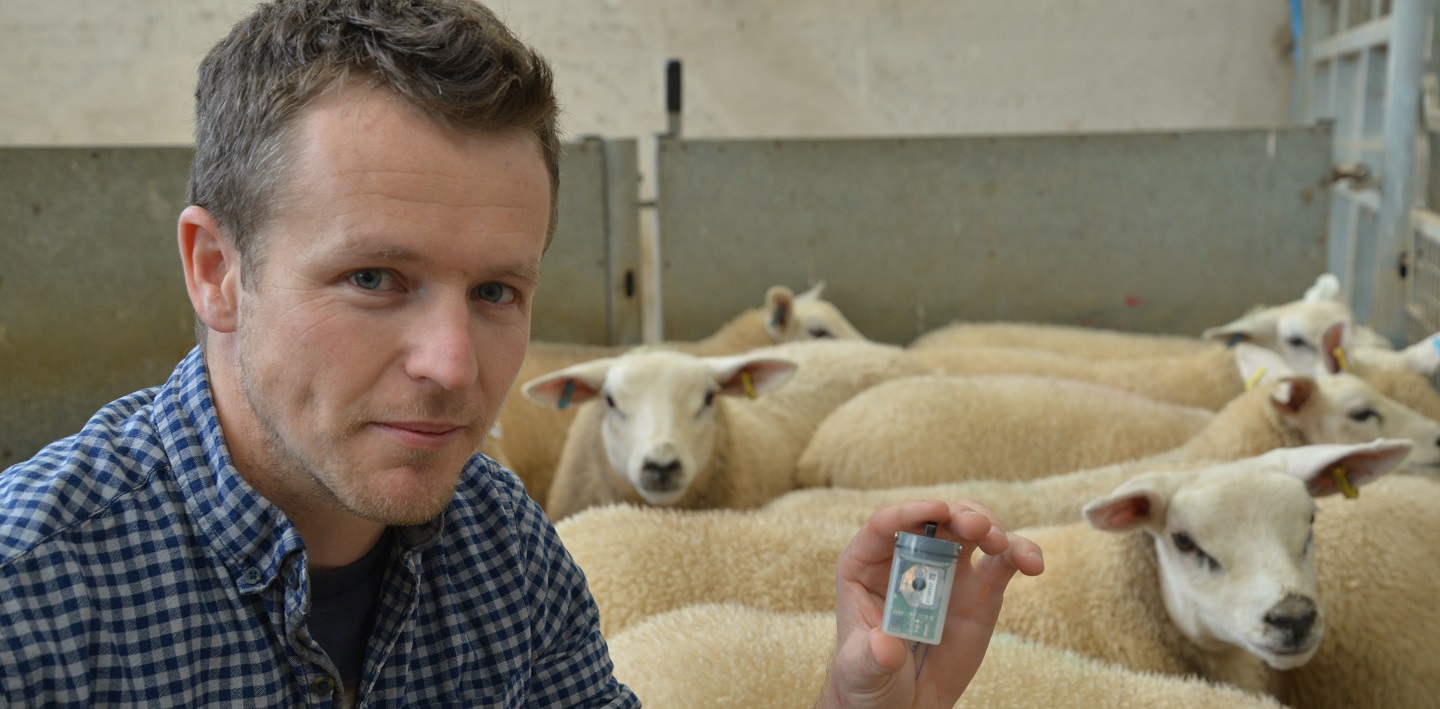Success in timing sheep resting habits could lead to predicting birth

Dr Manod Williams
13 August 2021
Researchers at Aberystwyth University hope to be able to predict when sheep give birth after successfully proving a way of measuring for how long the animals lie down.
In a new research paper in the journal Applied Animal Behavior Science, Dr Manod Williams of the University demonstrates that small measuring devices called accelerometers fitted to the legs of sheep can be used to successfully estimate how long they lie down.
Despite the widespread farming of sheep, little is known about their resting habits.
The study found that the lying behaviour of pregnant sheep 10 days before lambing was associated with factors such as the number of expected lambs, their birth weight and sex.
Ewes that were managed to lamb indoors and carrying a single male lamb lay down for an hour less each day than those expecting female lambs. For ewes expecting twins indoors, the researchers also found that increases in the combined birth weight of the lambs meant less lying down.
The lamb’s gender did not affect the lying behaviour of sheep in the outdoor-lambing flock, but the birth weight of twins affected both the lying bout duration and the frequency of lying bouts of these ewes.
On average, the sheep that were studied lay down for around 12 to 13 hours a day, with those kept indoors lying for a little longer than those outside.
The study is part of efforts to develop precision livestock farming methods for the sheep sector, and to allow a better understanding of the behaviour of pregnant ewes.
These methods could help optimise facilities and stocking densities during important times in a shepherd’s calendar.
In addition, it is believed that this research will lead to predicting when sheep will give birth by identifying the factors that affect for how long they lie down.
Aberystwyth University’s Dr Williams, who led the research, commented:
“There is a lack of understanding about the factors affecting the lying behaviour of sheep: we need to better understand how much they should lie down per day, what constitutes normal, and which physiological states affect them.
“Lambing represents an important period in the production cycle for ensuring ewe comfort and welfare but relatively little is known about the behaviour of pregnant sheep. Often, shepherds are in increased contact with sheep during this time and this presents an opportunity to test the feasibility of using these activity monitoring techniques.
“Lying behaviour has been shown to be a highly valuable metric of behaviour in other species. But, to date, no exploratory analyses on the lying behaviour of pregnant sheep have been undertaken using accelerometers.”
Dr Williams added:
“This information will be useful to better understand the behaviour of sheep particularly during times of increased stress such as lambing. Further development of integrated systems on farms will provide farmers with the information necessary to make management decisions at the level of the individual animal as well as at flock or herd level. This research also takes us a step closer to being able to predict with detail when ewes will give birth.”
The study was conducted at two farms – one in Aberystwyth University’s Fferm Gogerddan and another at Coleg Cambria’s Llysfasi farm in Ruthin, north Wales.
The study was part of the ‘PreciseAg’ project which researches precision livestock farming in order to improve the sustainability of the Welsh agricultural industry. It was funded by the Higher Education Funding Council for Wales.



